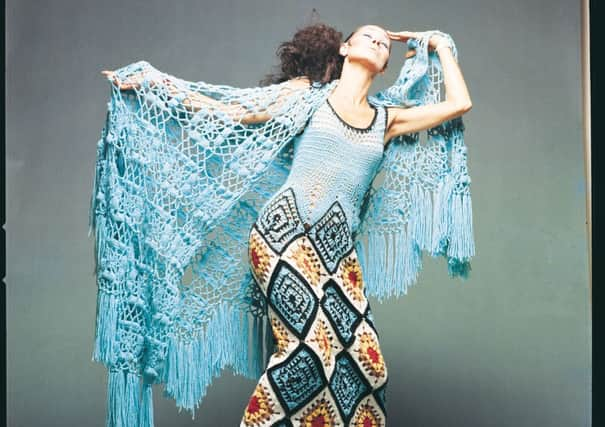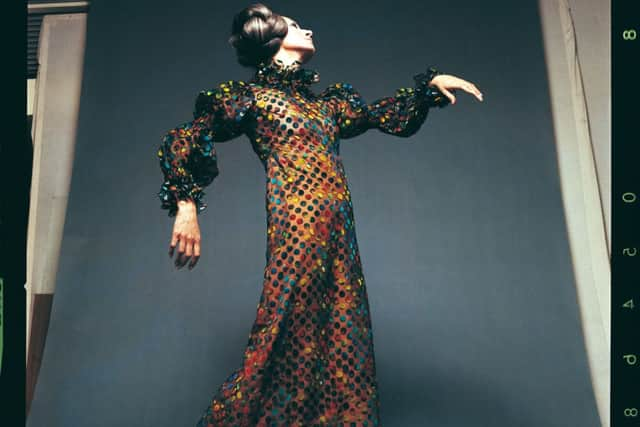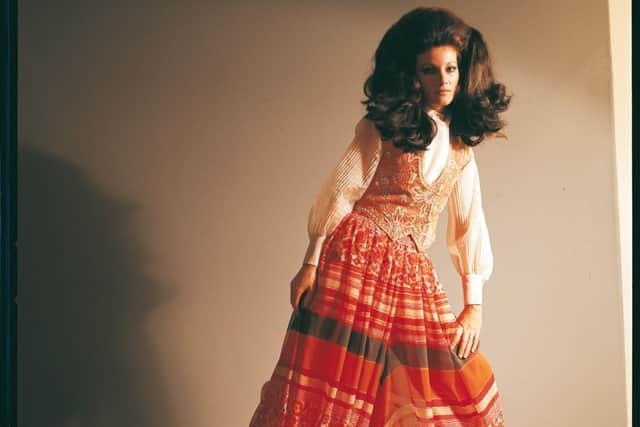The eclectic fashion trends of the 1970s


THE 1970s was a decade whose fashion and music started with hippy chic, pumped up into disco and ended with punk. The soundtrack kicked off with a cover version of Joni Mitchell’s Woodstock and ended with God Save The Queen, and clothes followed suit, from the peasant look to glam and disco, through retro to the rip it up and start again ethos of punk.
FOLLOW US


SCOTSMAN TABLET AND MOBILE APPS
The mantra was anything goes, but many of the trends that clothed that decade didn’t go. They were here to stay, and you only have to look at this year’s catwalk shows to see that maxi dresses, platform shoes, the hippie vibe and punk never went away.


Advertisement
Hide Ad“It was all about finding your own voice, in terms of fashion,” says Charlotte Fiell, co-author of Fashion In The ‘70s. “There was so much going on in terms of fashion there wasn’t one coherent style, but a celebration of the self. In the 1960s if you wanted to be fashionable and wear a mini, you had to be young, but in the 1970s you could wear midis or maxis whatever your age. People began to choose their look according to what suited them, rather than the latest trend. Fashion became more democratic.”
Packed with more than 400 photographs and illustrations, Fashion In The ’70s gives an overview of the period, from haute couture to high street, with Biba, Halston, Vivienne Westwood, Fiorucci and the style icons of the day, from Bianca Jagger to Twiggy and Debbie Harry, filling pages that feature everything from platform soles to peasant skirts, maxis to crochet. It also gives a context for the clothing and its relationship with social change such as feminism and environmentalism. Hemlines always drop in a recession, but the maxi was also a rejection of the mini skirt.
“In the 1960s there were obvious key looks and youth culture came to the fore, but by the 1970s recession meant less disposable income and people weren’t following fashion so slavishly,” says Fiell. “For the first time they were buying second hand. Before that people didn’t want second hand, because it meant you couldn’t afford new clothes. Today, vintage is often more expensive than new. Cheap fashions like gingham and cheesecloth became popular at the same time as well as new synthetics, like crimplene, which were also cheap.
“A recession makes people nostalgic and they started wearing vintage and it became much more mainstream among a younger demographic. If you’re not happy with where your society is, it’s very easy to retreat into past looks, whether that was Laura Ashley milkmaids, 1930s Biba glamour, or ethnic styles. It’s a form of escapism, as were ethnic looks.
“The peasant look was eco-aware but also chimed with the new internationalism, fuelled by greater ease of travel and awareness of other cultures. Through air travel, people were looking at different culture, Grecian, Indian, East meets West and Japanese designers began selling to western buyers. Escape meant looking outwards, as well as backwards. There was more freedom, with people moving towards personal empowerment, looser clothes, release from restrictions of social constraints.”
One example of social change having a huge effect was in the surge in popularity of trousers for women. As feminism took centre stage, and legislation like the Equal Pay Act of 1970 saw women winning equal pay for equal work, their wardrobes also became more male.
Advertisement
Hide Ad“Women gained confidence in themselves and their opinions and more entered the workplace. They were wearing trousers more than ever before, pushing acceptable boundaries of what could be worn by women and it was a revolution in the workplace. It was also the beginning of power dressing.
“With women’s liberation there was a feeling that women could do it themselves and didn’t need to subscribe to traditional female stereotypes. To be taken seriously, you had to dress differently.”
Advertisement
Hide AdThe trouser suit is still with us today, and you only have to look at Angela Merkel and Hillary Clinton for a lesson in how powerful women power dress.
“There was a lot of playing with gender. YSL with his tuxedo and in the late 1970s, tailored tweed and women with ties.”
Men too began to explore less masculine styles with longer hair and brighter colours, and unisex jeans became popular with both sexes.
“Denim started in the 1960s but it was a hippie thing. In the 1970s it grew into a widespread fashion trend and you had the birth of ‘designer jeans’.
“There were all sorts of expressions of feminism, whether emphatic like the safari suit, or a more in your face, anti-pretty girl look. And if some of the disco fashions were quite overtly sexualised, it was on women’s terms. They weren’t dolly birds any more and if they wanted to project that image, it was a choice.”
Advances in technology meant clothes were more comfortable. Synthetics like Lycra took on a life of their own and dancewear became daywear. Fashion couldn’t get any glitzier and more excessive, but then three-quarters of the way through the decade, along came punk.
Advertisement
Hide Ad“Punk was a rejection of everything and it had a cathartic effect. It was going to happen sooner rather than later because there was such dissatisfaction with the status quo.”
Designers like Vivienne Westwood championed punk, and she is still doing it today, while others embrace almost every element of 1970s fashion.
Advertisement
Hide Ad“The spring/summer 2015 collections have virtually every designer referencing different trends, especially Karl Lagerfeld for Chanel. Every item in his collection has some 1970s theme – prints, stripes, bow collars, off the shoulder. Every outfit was 1970s and then at the end he came out with the slogan placards,” says Fiell.
With his young, white, skinny models holding aloft “Make Fashion Not War” and “History is Her Story” placards, whether the man who called Adele “a little too fat” has suddenly discovered feminism or is simply using it to sell clothes, the spirit of Seventies radicalism is having a fashion moment.
“We are rehashing it all the time,” says Fiell. “People think it’s the decade of brown and orange, and flares, but if you look at the full overview, it was an extraordinary time of innovation and different looks. So it’s not surprising it’s the decade that designers keep revisiting for inspiration.”
It seems the 1970s are here to stay. n
Twitter: @JanetChristie2
• Fashion In The ‘70s, Emmanuelle Dirix and Charlotte Fiell, published by Goodman-Fiell, £30